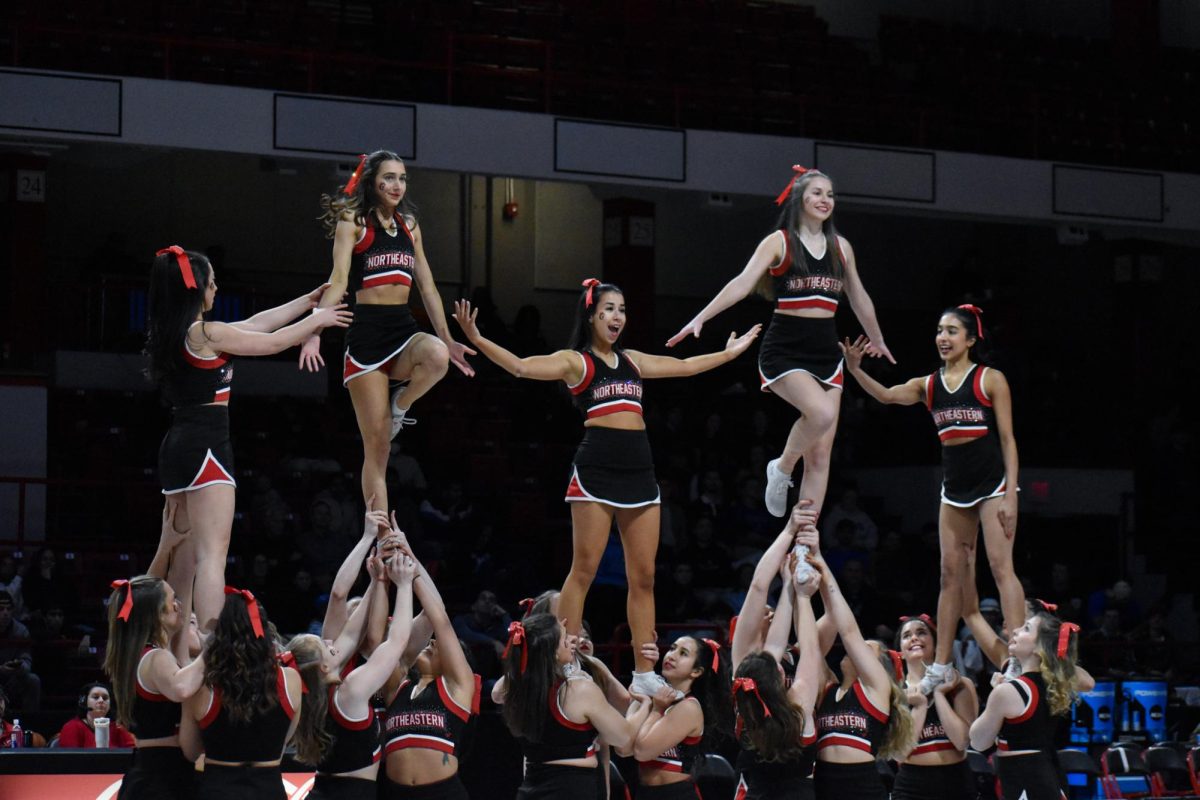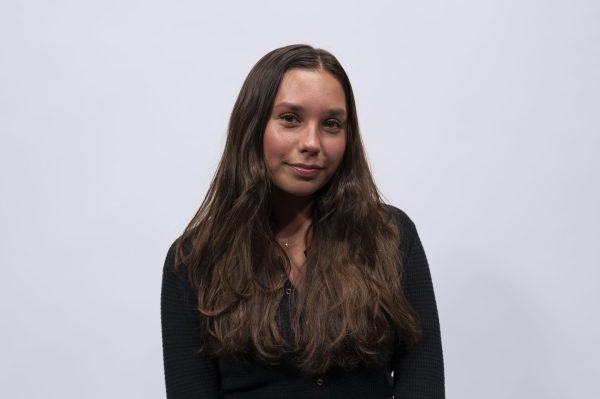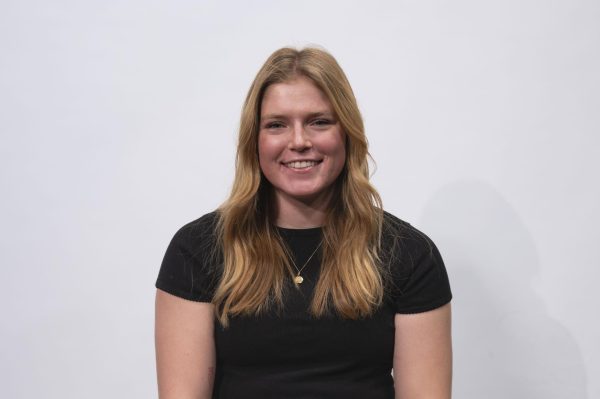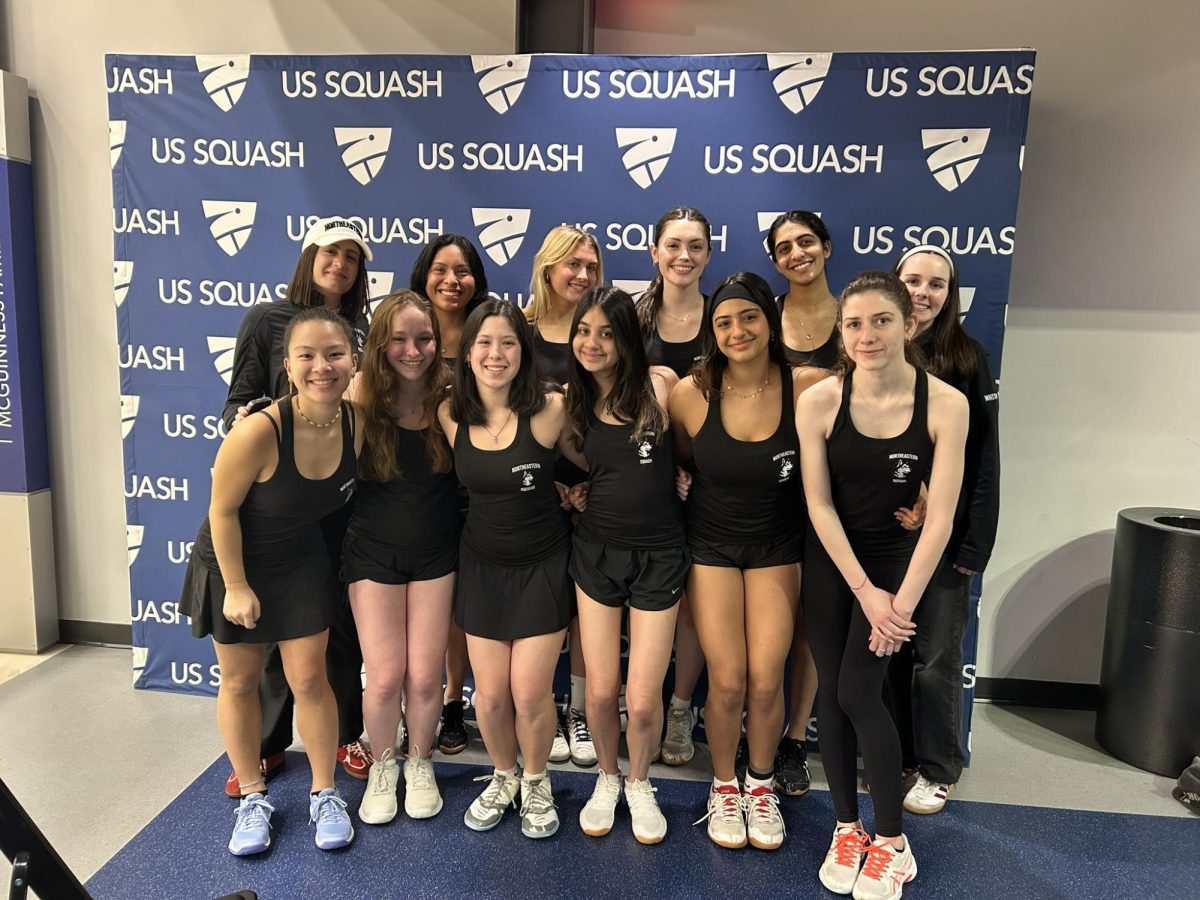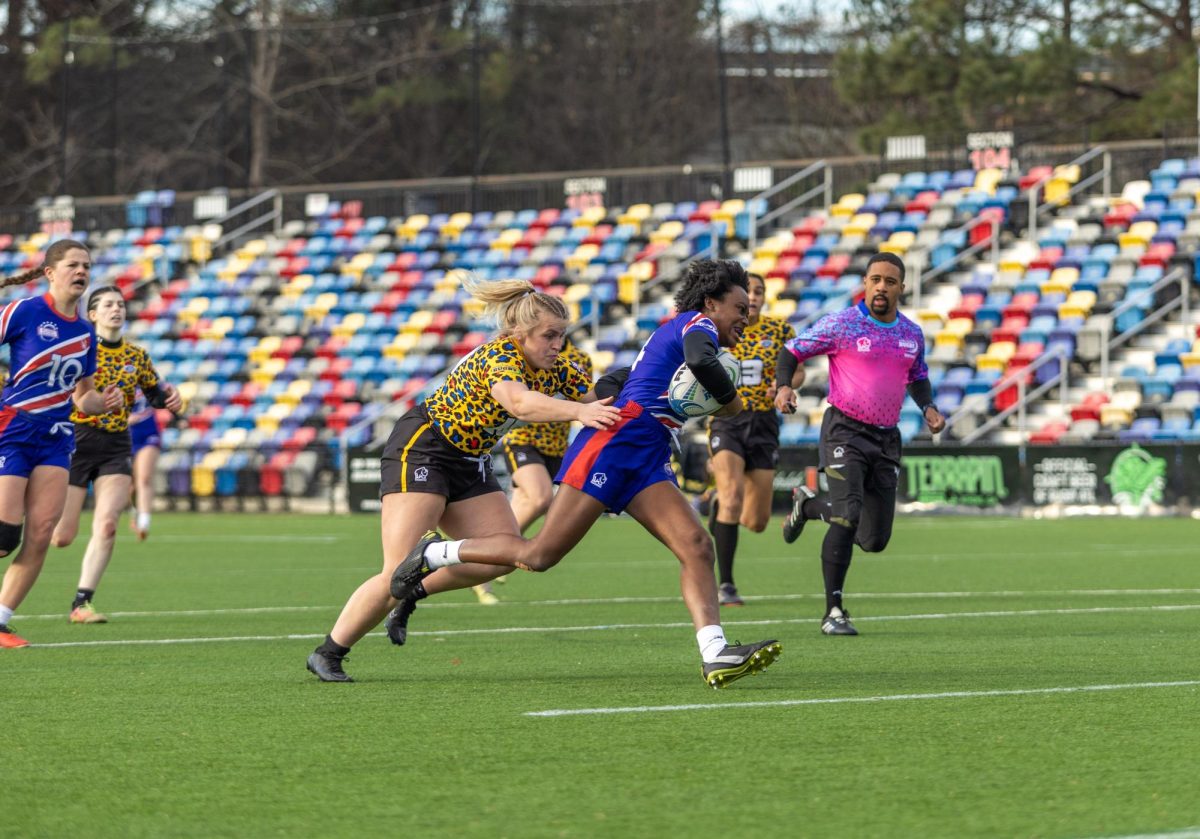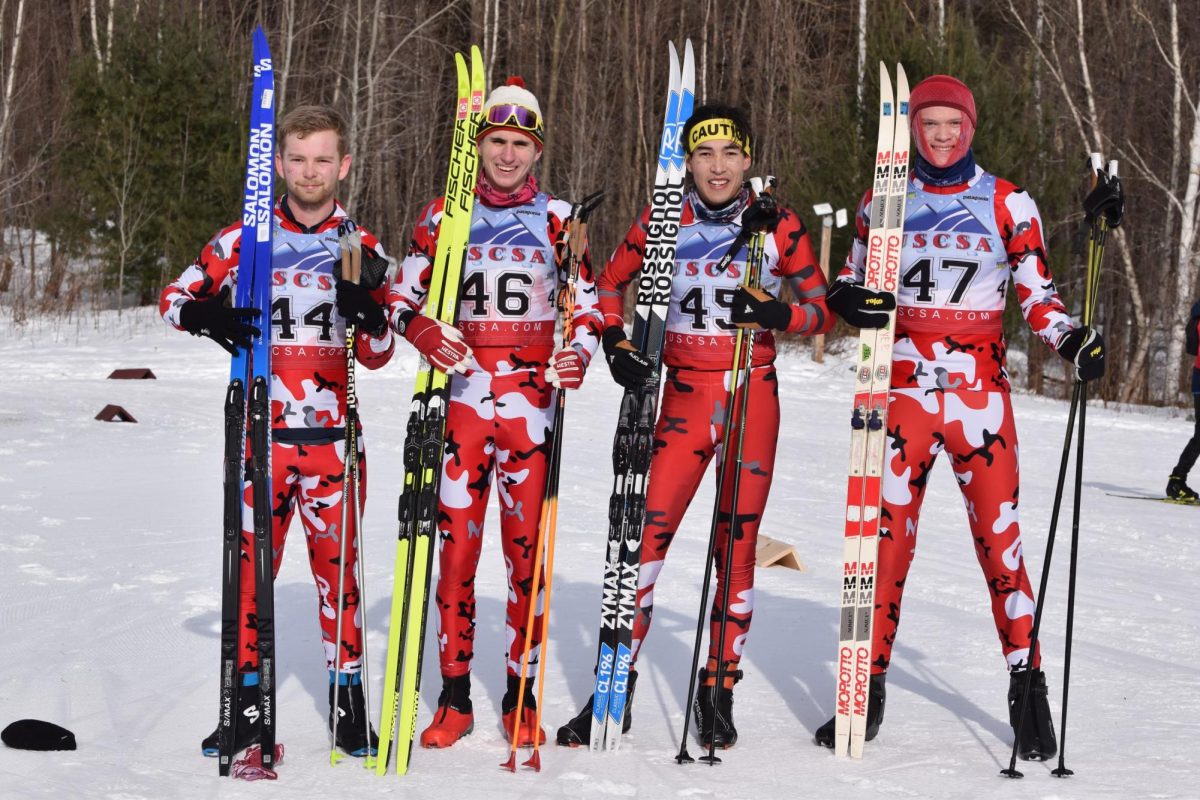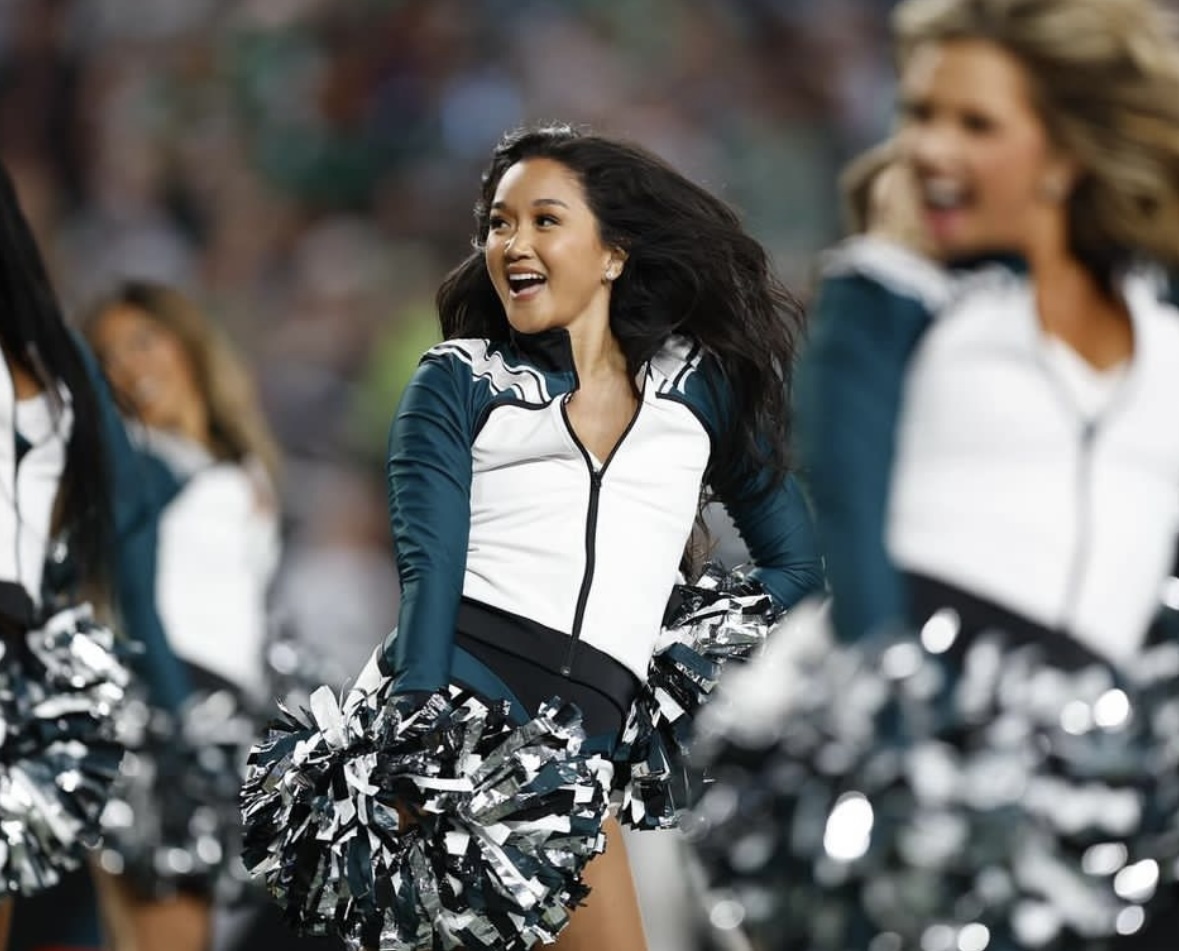Beyond the pom-poms and backflips at the sidelines of basketball games, the Northeastern cheer team takes on adversity as a club sport while supporting the Northeastern and Boston communities through philanthropy.
The club team, which placed third nationally in their division last year, showcases intensity and rigorous commitment in its training as they practice at the Cabot Center three times per week, usually between 9 p.m. and midnight.
Northeastern’s cheerleaders have a history of success despite the hurdles the team has faced. In 2002, the team won first place at the National Cheerleaders Association Collegiate National Championship and performed at the 1996 Olympic opening ceremony. Recently, the team began building an alumni network, hoping to grow it into a supporting community to honor the graduates’ legacy.
Despite its status as a club sport, Northeastern’s cheer team competes against D1 varsity cheer squads. The designation comes with several hurdles for the team.
“Women’s sports in general don’t get a lot of respect,” said Emma Jordan, co-captain and fourth-year American Sign Language and human services combined major. “I don’t think many students at Northeastern know that we have a cheer team and that we’re ranked so high. One of the things that bothers us a lot is we often get completely confused with dance. … It’s unfortunate because we’re both extremely good at what we do and highly ranked and should be treated and valued as the separate sports that they are.”
In the past, the team’s practice time slot has been taken due to D1 teams claiming the space on many occasions, according to several cheerleaders who spoke with The Huntington News. When this happens, the team travels 45 minutes south — using both a Northeastern-owned van and a carpool system — to Premier Spirit Athletics in Weymouth, Mass. It costs $30 an hour for the whole team to use its facilities.
A lack of practice space and last-minute changes aren’t uncommon hurdles for the team. For example during choreography weekend Jan. 17, when the cheerleaders make their routine for nationals, the team ran into a booking issue, according to team captain and fourth-year psychology major Jenna Barber.
Barber said she emailed the club sports office to book a space in the Cabot Center in October for a weekend in January, which was confirmed. Two days before that weekend, when the team checked the Cabot schedule, a visiting D1 basketball team had taken the space instead. Barber said the team received no communication about the booking.
“Thank God we had access to this schedule because we knew otherwise we just would have shown up for our practice with another sports team in there,” Barber said.
Matthew Houde, Northeastern’s associate athletic director of communications, public relations and broadcasting, said that though the university’s athletics and recreation staff tries to minimize changing or canceling booking facility and room reservations, “sometimes circumstances necessitate scheduling adjustments.”
“All bookings for club sports in the Cabot Center are booked with a contingency that they could be moved at any time,” Houde wrote in an email to The News. “Varsity teams are given priority to practice times, as are visiting teams due to conference rules. It is also worth noting that there are times when varsity practices are moved or canceled due to University events. … When a booking change is necessary, the club sports staff are notified as quickly as possible. The club sports staff then notifies the team coaches or executives.”
Despite practicing in Cabot, cheerleaders say they do not have Husky Card access to get into the facility as varsity athletes do, so they wait for an employee or a varsity athlete to open the doors for them instead.
This is standard practice for all users and guests to Cabot who need access to the building during operating hours, Houde said, adding that the cheer team’s practices are always scheduled during operating hours, “so access to the building is provided to the team when it is needed.”
But with 64 club sports, 17 D1 teams and a limited amount of practice space, cheerleaders say their sport often falls to the bottom of the priority list.
“We try and provide an equal amount of time and space for our club sports student-athletes as well as intramural and recreation student-athletes. But the challenges are real, and it is facility challenges,” said Jim Madigan, Northeastern’s athletic director, in an interview with The News.

The cheerleaders’ busiest time of the year is basketball season. The athletes attend every men’s and women’s basketball home games, as well as both men’s and women’s ice hockey teams’ Beanpot tournaments in TD Garden. The basketball games, in particular, add additional hours of cheering, team members say, with games occurring two to three times per week.
“We usually try to fit in three nights [of practice] a week on top of basketball games as well, which are really ramping up, especially in spring semester, … so it’s definitely a lot. It’s almost most days of the week,” said Isabel Hagger, the head of fundraising for the team and a third-year behavioral neuroscience major. When they practice more in the spring season for Daytona, the more likely it is for their practice slots to be taken.
Practice space is not the only issue the team faces due to their classification as a club. Club sports teams at Northeastern, regardless of if they are high-contact, do not have automatic access to athletic facilities or trainers, unlike the athletic trainers who work with varsity programs and student athletes. Due to the nature of the sport, injuries are common among the squad.
“Athletic trainers are provided for select club sports home competitions, based on risk factor, by a third-party service. That coverage is in place for the duration of the competition only,” Houde said. “Ongoing treatment is managed through UHCS, as it would for the general student population. The cost for the third-party coverage is covered by Athletics & Recreation.”
The National Institutes of Health reported in 2022 that “cheerleading is associated with the highest number of direct catastrophic injuries, or those resulting directly from sports participation for all high school and collegiate sports in which women participate.”
If one member gets hurt, the team’s entire routine has to change.
“When we lose one athlete, we lose four,” Barber said.
Without medical professionals on hand, several members of the team said they tend to rely on makeshift solutions. This frequently means veteran cheerleaders tape younger athlete’s ankles, a process that would normally be done by trainers, Barber said.
“We all have ankle problems, wrist problems, knee problems, hip problems, but we go through a lot of Icy Hot, Advil and tape,” Barber said.
For the past two years, the team has been supposed to document every time someone gets injured. According to Barber, the data the team collected was supposed to be presented to the athletic training department, but nothing has come from it yet.
“Cheerleading is a very intimate, close contact sport. We have injuries often and if we have someone get injured and we report it, then there’s supposed to be a strict process for them returning to play,” Barber said. “They typically just go unreported by us because we don’t wanna have to go through all that paperwork and risk losing an athlete.”
Northeastern’s Club Sports Office declined to comment on injuries.
Any and all injury treatments for recovery come out-of-pocket from the cheerleaders.
Moreover, cheerleaders say funding from the university tends to fall short of what the team needs in order to function sustainably. This school year, the team was allocated $300 per athlete for up to 20 members, according to head coach Kennedy Pagano. Given the team has 24 members, this totalled $6,000. But the cost of competing at College Nationals in Daytona Beach, Fla., averages around $50,000 per team..
Pagano, who works full-time as an oncology nurse at the Boston Medical Center, spends her nights coaching and advocating for the team.
“If I didn’t love the girls, and didn’t feel like I built the program up, I don’t know if I would still be here,” said Pagano, who has been coaching the team since 2021. “The financial compensation does not pay off, but the mental reward does.”
According to an annual survey by the Northeastern’s athletic department in 2024, the average salary for the head coach of a men’s D1 team was $250,757. The average head coach of a women’s D1 team made $141,541. According to the club sports handbook, club team coaches make significantly less and are considered part-time employees — Pagano earns $5,000 per year for 16 to 20 hours per week as her maxed out salary.
Houde said that because club sports are student-run, this salary is determined and controlled by the executive board of the club, which receives student club funding from the Student Government Association.
“Each club has an executive board that works with the full club membership to determine annual club budget,” he said. “Part of that budget determination is whether or not the coach will be paid, and if so, what the amount of that payment will be.”
Pagano uses her salary to buy senior gifts for the graduating team members, get the team food at events, as well as chip in when more money is needed to go to Daytona — a situation the team finds themselves in every year. The cheer team also has three volunteer assistant coaches, Catherine DiPalma, Zoe McFadden and Pagano’s sister, Ainsley Pagano.
“My goal is to get a national championship and then advocate for more,” Kennedy Pagano said.
Besides the funds from Northeastern and contributions from Pagano’s salary, the team’s main source of income comes from fundraising. 50/50 raffles at hockey games, where participants buy tickets for a chance to win half of the money collected and the other half goes to the team, and hosting high school cheer clinics are just a few of the ways it earns cash. By cheering at Northeastern’s commencements and convocations, they are also able to receive compensation from the university.
“If the school was supporting us more in financial ways and recognition ways, I don’t think that would stop what we’re doing at all,” Hagger said “I think if anything, it would enhance it. We would just continue to be doing all of this volunteering and fundraising. … We really just help out other people.”
In addition to participating in their own competitions and cheering on other Northeastern sports, the team is involved in many local community service events, participating in the Jimmy Fund Walk, MDS events, colon cancer walks, Blue Sky Day and volunteering at the Perkins School For The Blind.
“I think it really gives the girls perspective. As much as we love this sport and fight for everything we do, at the end of the day, that’s not the most important thing in the world,” Kennedy Pagano said of the community organizations. “There’s someone going through something else and if you can have an impact on that, you should.”
From community outreach to advocating for more wide-spread recognition, the Northeastern Cheerleading team hopes to highlight their broader contributions to the school.
“We do so much more than just the basketball games,” said Jordan, “I think that would be something that I want the general student body to know, … We’re more than just decorations on the sidelines.”



